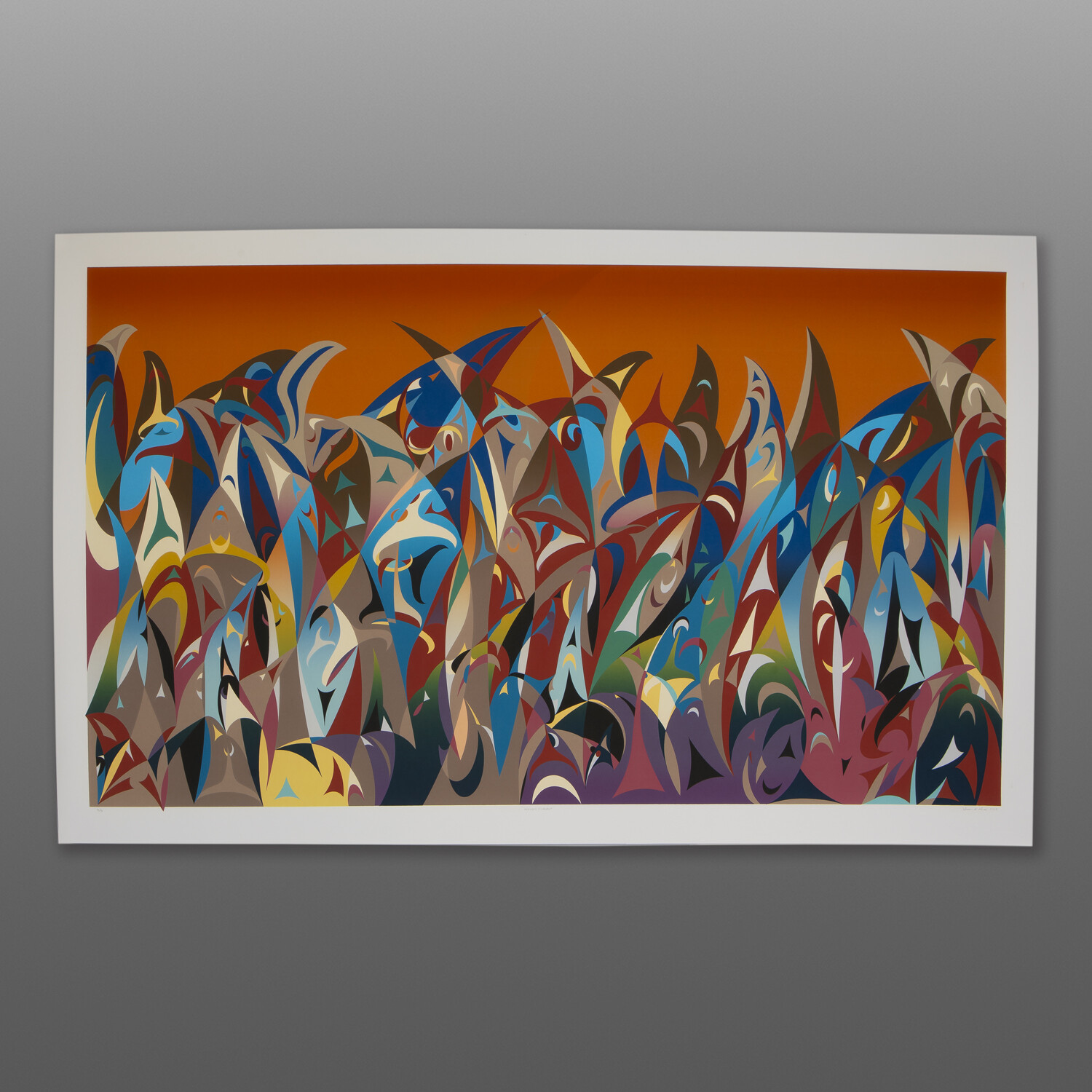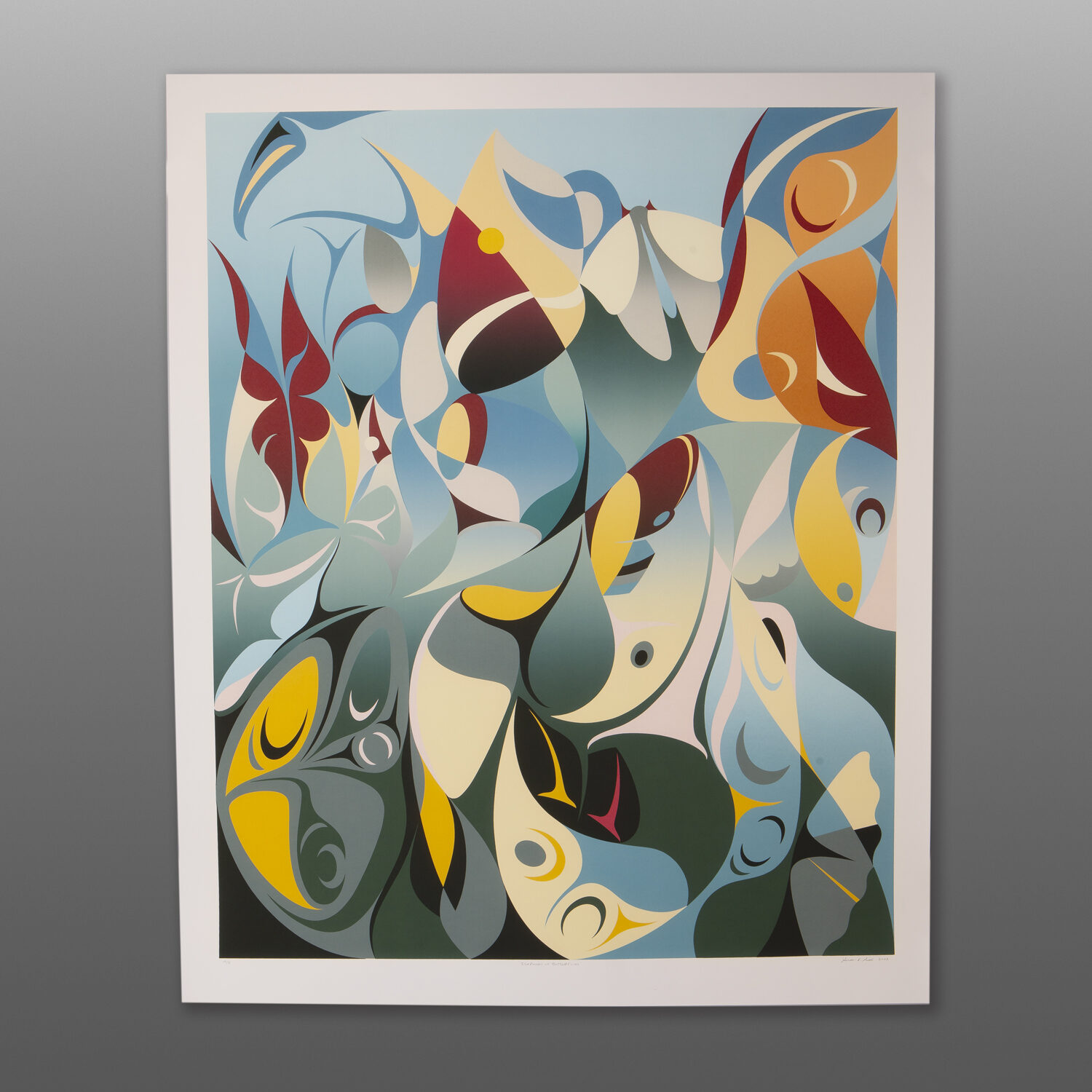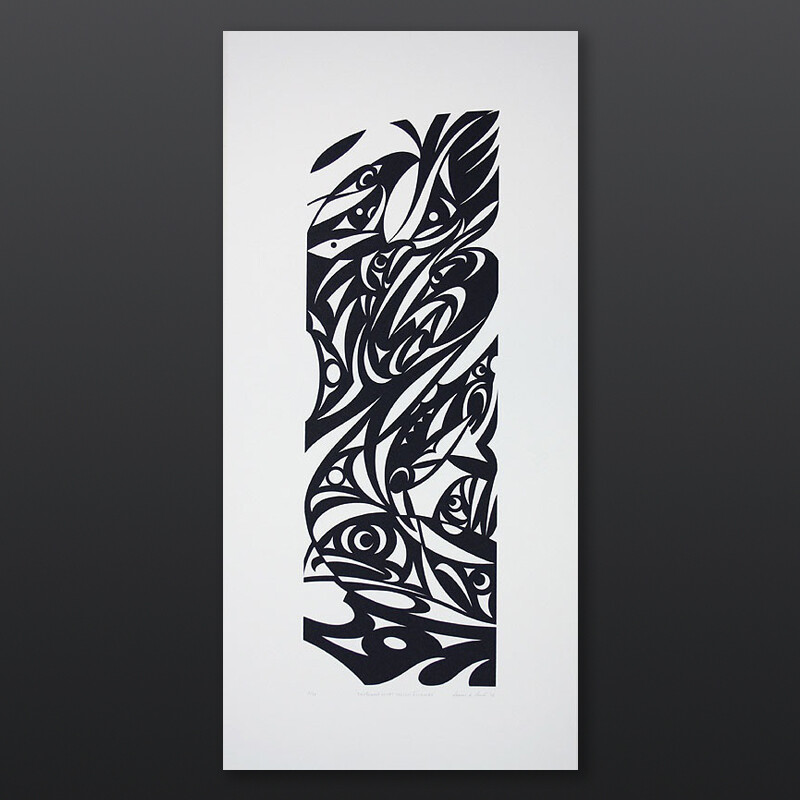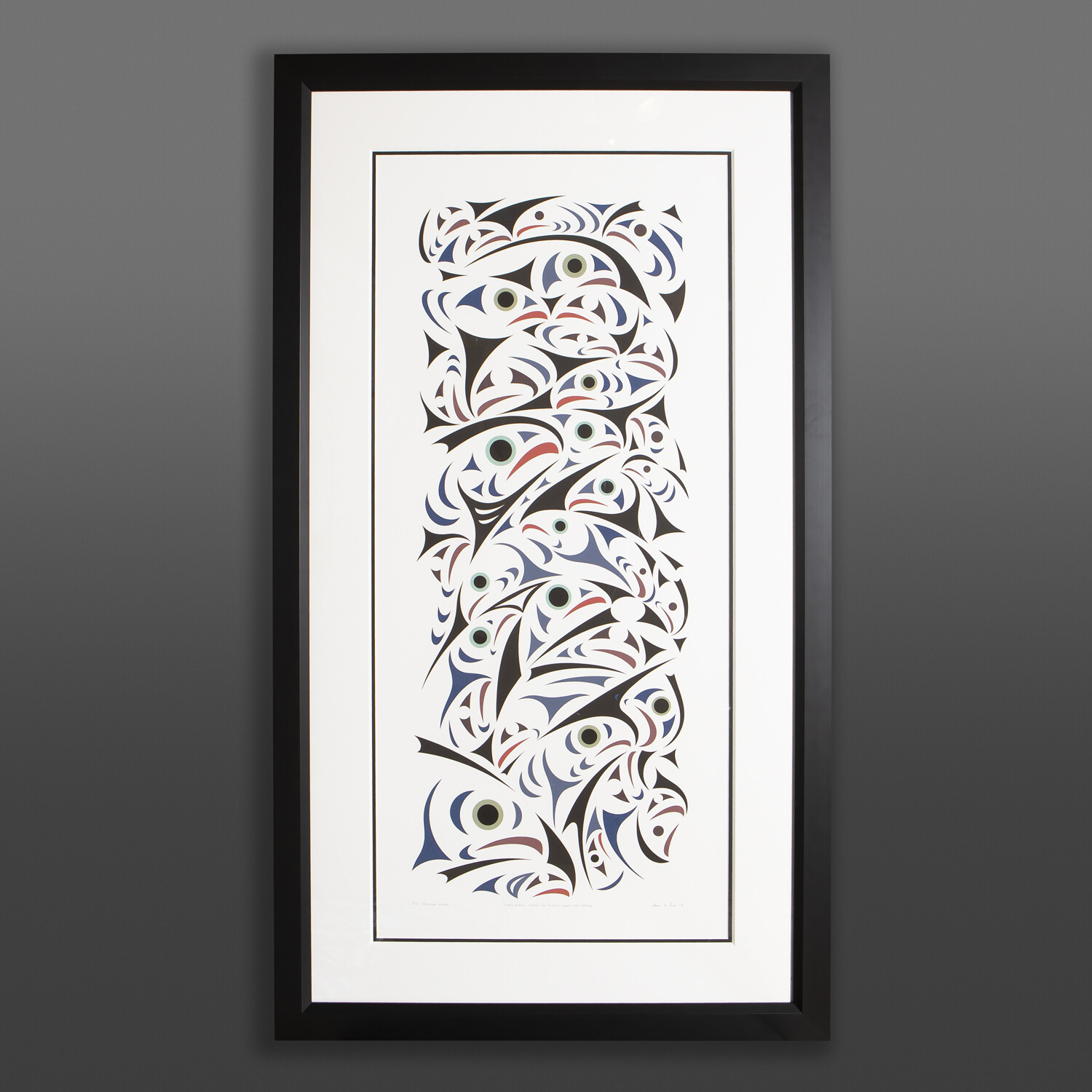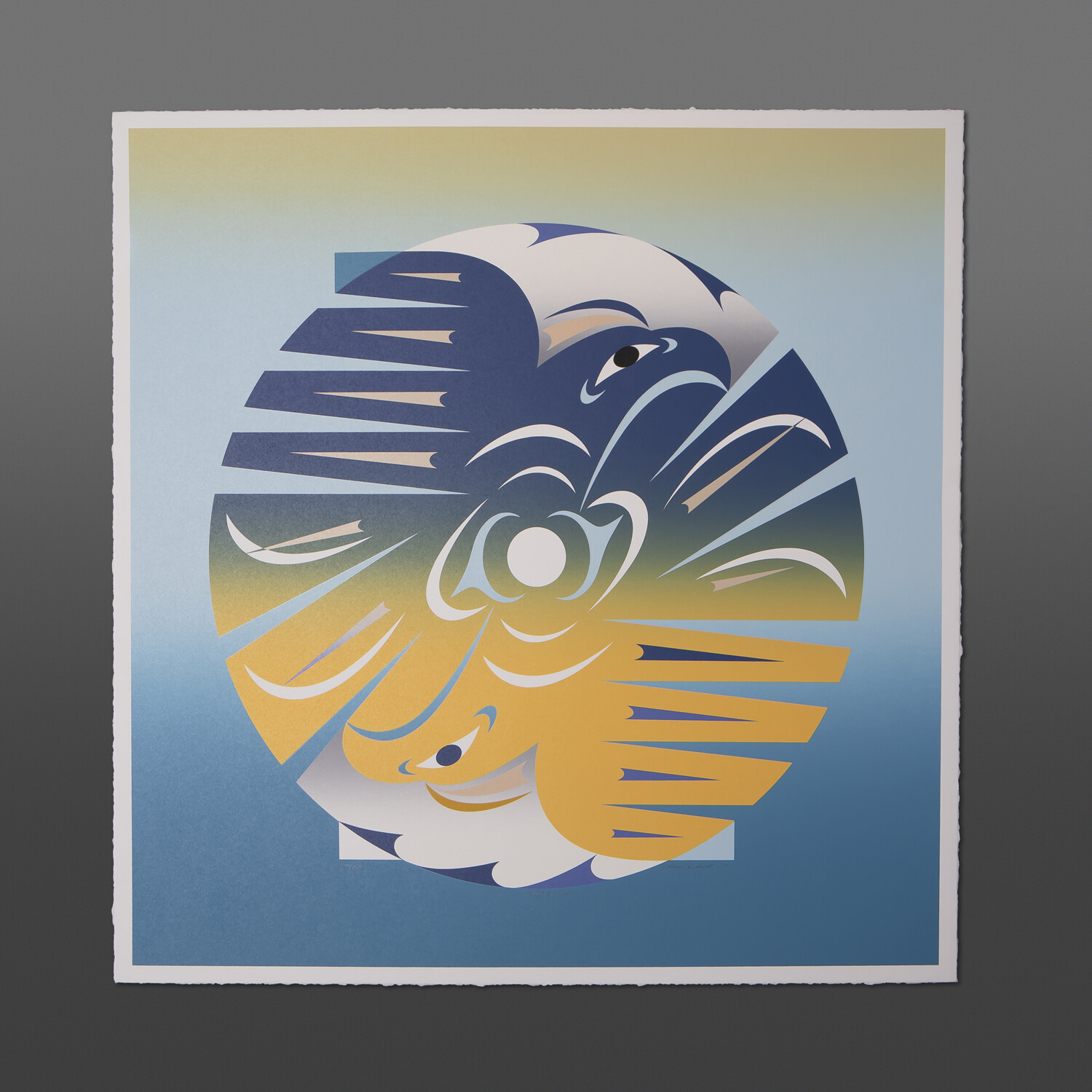Susan Point
Coast Salish
Coast Salish artist Susan Point was born in British Columbia, on April 5, 1952. Since birth Susan has lived on the Musqueam First Nation Reservation in Vancouver, B.C.
Susan began her art career in 1981 with engravings on bracelets, rings, pendants, earrings and barrettes. Although many of her contemporaries were producing designs which were representative of more northern native groups, she chose to concentrate on the designs of her own people. Consulting with her uncle, Professor Michael Kew, an anthropologist at the University of British Columbia, Susan began to investigate traditional Coast Salish art forms. One of the forms that intrigued her was the Spindle Whorl, a wooden disk, elaborately carved, which was used in the spinning of wool. Using silkscreen prints, Point began experimenting with traditional two-dimensional designs. Her first print was "Salmon". This design is of four salmon in a circular format, recalling the spindle whorls Susan had studied during this period, revealing a mastery of the traditional Coast Salish style.
During the next ten years, Susan worked to define her interpretation of traditional art forms. In 1983, Susan began blending colors, prompting some critics to reject her color schemes as nontraditional. Although Point was concerned about this negative reaction, her creative drive prevailed, and soon she was exploring other techniques, such as foil embossing, paper casting, linocut printing and lithography. In the 1990's, Susan Point began creating three-dimensional art in materials such as glass, bronze, wood, concrete, polymer, stainless steel, and cast iron. Due to her willingness to explore new mediums and work on a large scale, Point has been awarded numerous public art commissions, including building facades and large sculptures. Her large-scale works welcome visitors at the Vancouver International Airport as well as public buildings and corporate developments on both sides of the Canada/U.S. borders, paying tribute to the First People’s of these countries and reminding us of these areas rich in cultural history.
Most recently, Susan was honored to be chosen to create a piece of art to be presented to the Smithsonian Institute in Washington DC, a gift from the Government of Canada to celebrate the opening of the National Museum of the American Indian. She was recently elected to the Royal Canadian Academy of the Arts, and has been presented with a National Aboriginal Achievement Award in recognition of her work as an artist. Susan is realizing her vision that will no doubt inspire artists and admirers for generations to come.





